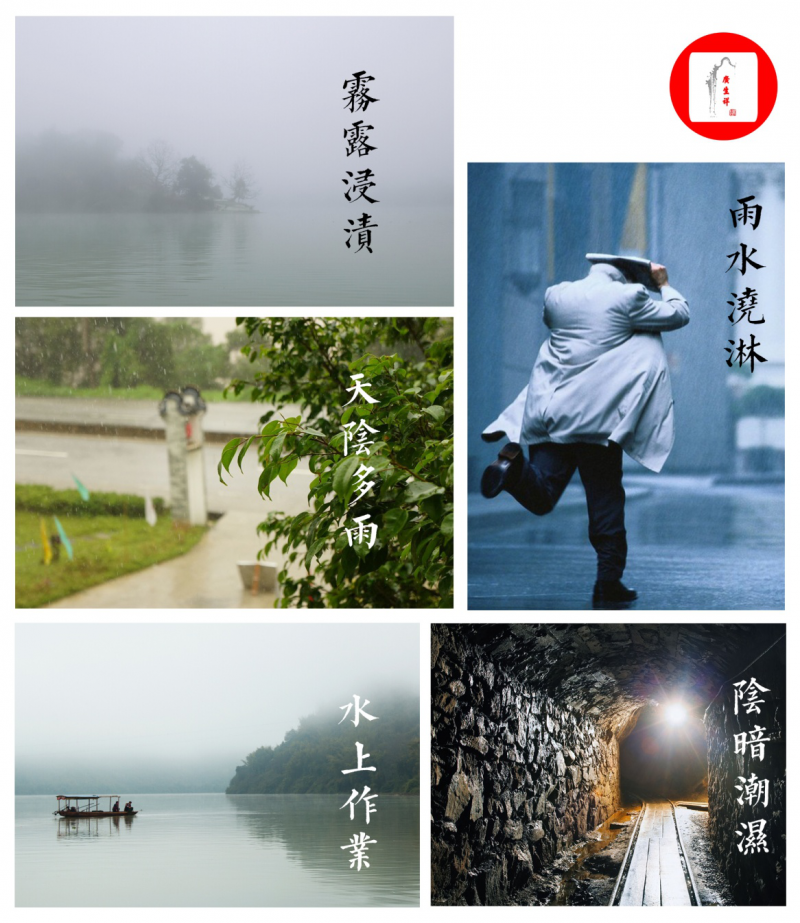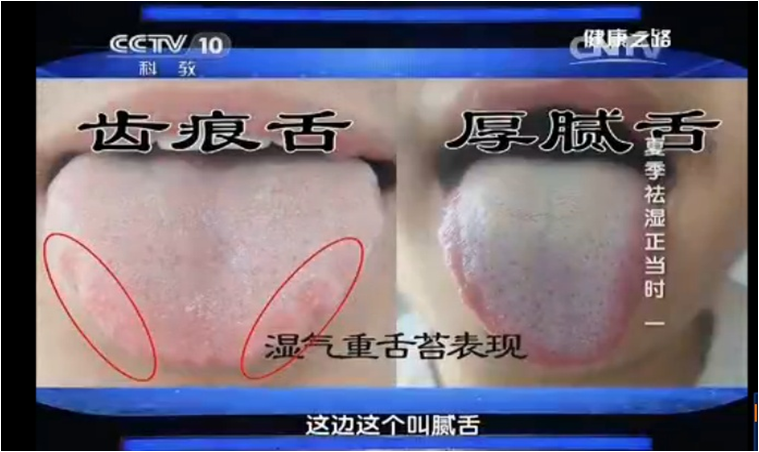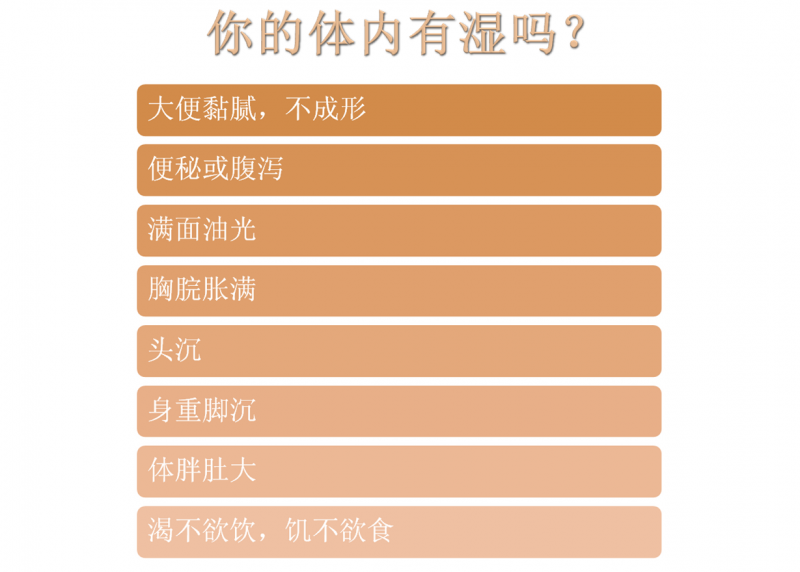Traditional Chinese medicine considers dampness the root of many illnesses, often saying, 'A thousand colds are easy to dispel, but dampness is hard to remove.' How does dampness form? What types are there? How can we self-assess whether our bodies have dampness? During the Ming and Qing dynasties, Liubao tea was renowned for its remarkable ability to 'remove dampness and regulate the stomach.' Today, can we simply brew and drink Liubao tea daily to eliminate dampness? In this article, we explore these questions from multiple angles.
The Yellow Emperor's Inner Canon categorizes dampness into external and internal types based on its formation.
External: When the surrounding environment has excessive dampness, and the body's defensive energy (正气) is insufficient, dampness can invade and cause illness.
Here are some real-life examples:
Exposure to mist or dew, such as during overcast or rainy weather with high humidity; getting drenched in rain with wet clothes clinging to the skin; living in damp, poorly ventilated places for long periods; working in water-related occupations for extended durations...

Dampness from the Earth
The Ling Shu • Nine Palaces and Eight Winds states, 'Exposure to damp environments leads to atrophy (痿).'
The Su Wen • Treatise on Atrophy also says, 'Prolonged exposure to dampness, such as working with water or living in damp conditions, causes muscles to soften, leading to numbness and atrophy. Hence, the lower classic states that flesh atrophy arises from damp lands.'
This refers to illnesses caused by excessively damp living environments.
Dampness from the Heavens
The Su Wen • Great Treatise on the Five Regular Movements says, 'In years of excessive earth energy (敦阜), heavy rains occur frequently, dampness prevails, and dryness retreats.'
The Su Wen • Great Treatise on the Interaction of Energies states, 'In years of excessive earth, rain and dampness spread widely.'
The Su Wen • Great Treatise on the Six Seasonal Influences notes, 'Under the governance of the Taiyang (太阳) celestial phase, cold and dampness persist in energy exchanges, leading to cold-damp illnesses.'
These passages describe dampness caused by climatic changes and excessive rainfall.
Internal: Internal dampness arises primarily from imbalances in the water metabolism of the lungs, spleen, and kidneys. Among these, the spleen and stomach are most closely related to dampness disorders. The spleen prefers dryness and dislikes dampness; it governs the transformation and transportation of food and fluids. Poor dietary habits damage the spleen, impairing its function and leading to fluid stagnation, which generates dampness. Dampness originating internally obstructs meridians, disrupts energy flow, and clouds the clarity of organs, causing illness.
Modern unhealthy eating habits contribute to the accumulation of internal dampness. Traditional Chinese medicine links conditions like high blood pressure, diabetes, rheumatic heart disease, gout, and even cancer to dampness. Below are some foods that promote dampness:
Cold foods cause the spleen to contract sharply upon entering the stomach, disrupting its energy flow and generating internal dampness.
Excessive consumption of seafood retains bodily fluids, producing dampness. For example, gout in TCM is often classified as a damp-heat obstruction, requiring avoidance of seafood. Clinical studies in coastal cities like Guangzhou show higher rates of dampness-related disorders among seafood lovers.
Rich, sweet, and greasy foods are hard to digest, burdening the spleen and stomach, and thus promote dampness.
Alcohol, derived from fermentation and steam distillation, is inherently damp and a source of damp-heat. TCM advises against alcohol for those with spleen deficiency and dampness retention.

The Su Wen • Ultimate Truth Treatise states, 'All dampness-related swelling and fullness stem from the spleen.'
The spleen, an earth organ, dislikes dampness and prefers dryness. When the spleen is impaired, fluids cannot circulate properly through the triple burner or distribute throughout the body, leading to swelling and fullness.
Simple Self-Assessment for Dampness
The most accurate method: Observe the tongue.

In TCM, the tongue coating reflects internal conditions. A thick, greasy coating indicates dampness. Teeth marks on the sides of the tongue also suggest dampness.
Other methods:

Frequently Asked: Why Does Ancient Liubao Tea Remove Dampness?
'Why does Liubao tea, especially ancient Liubao tea, remove dampness?'
This is akin to asking why angelica (当归) invigorates blood or nourishes blood. Some ask, 'What substances cause dampness removal?' This question is flawed because 'substances' is a Western scientific concept, while 'dampness removal' is rooted in Eastern medical wisdom. However, for tea enthusiasts seeking answers, I attempt to explain ancient Liubao tea's dampness-removing properties from several perspectives.
First, the Five Elements' mutual generation and restraint—local environments nurture local remedies. Take my hometown, Henan, as an example. In Five Elements theory, the Central Plains belong to the earth element. The region’s fertile yellow soil aligns with earth’s color. Earth restrains water, and the kidneys (associated with water) benefit from local specialties like iron棍 yam and wild garlic, which tonify the kidneys. Similarly, the humid Lingnan region naturally produces remedies for its inhabitants.
Second, the principle of 'using what grows locally.' Qing dynasty physician Xu Huixi summarized: 'Medicinal use may rely on its energy, flavor... time of growth, or place of origin. Each remedy offsets imbalances, harmonizes organs, and heals diseases—study its principles to understand.' Southern regions historically suffered from miasma (瘴气). Liubao tea grows in foggy, damp areas, surrounded by heat-clearing and dampness-removing herbs. Thus, it embodies 'using what grows locally.'
Third, analyzing basic components. Western research suggests flavonoids, flavonols, and flavanols in tea polyphenols can penetrate cell walls, improving blood circulation.
(1) Penetrating cell walls—could this align with TCM’s concept of 'qi'?
(2) 'Improving blood circulation' is a misnomer! If circulation speeds up, doesn’t the heart beat faster? Clearly, 'smooth' doesn’t mean 'fast.' Thus, 'improved circulation' likely refers to smoother qi flow in blood vessels—what TCM calls 'unblocked meridians.' The English translation lacks a term for 'qi meridians.'
Liubao tea leaves contain 3.0% amino acids, 32.4% polyphenols, 4.4% caffeine, and 14.4% catechins (from Chen Zongmao’s Encyclopedia of Chinese Tea, p. 101). The tea’s intrinsic quality, processing, and aging are key.
Fourth, ancient Liubao tea’s strong qi ensures smoother meridians, preventing or resolving 'fluid stagnation'—thus removing dampness and preventing its formation. Dampness removal strengthens the spleen, harmonizing stomach function.
Fifth, ancient processing techniques. Unique steps like '堆罨' (pile fermentation), steaming, and '焗' (heat retention) involve repeated temperature shifts, enzyme activation, and microbial growth. These enhance tea polyphenol conversion, enriching flavor and efficacy.
Sixth, historical evidence. Since the Qin and Han dynasties, herbs for clearing heat and dampness were brewed to balance yin-yang and promote health. In the Ming-Qing era, Liubao tea saved many Southeast Asian miners, earning fame for dampness removal and stomach regulation.
Removing dampness, strengthening the spleen, uplifting yang energy, balancing yin-yang, and calming the mind.
See Dr. Luo Dalun’s The Relationship Between Dampness and Yang Energy in Our Bodies.
Tea lovers or sellers with questions about Liubao tea may submit them. We’ll compile responses from the Four Flavors Hermits in future articles. In the Year of the Monkey, we’ll host dialogues with the hermits—join us!